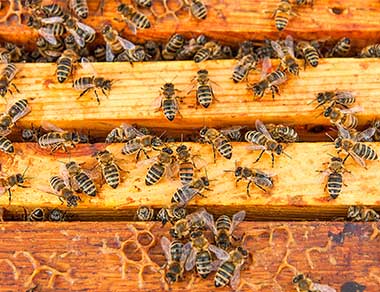The Biodiversity theme allows students to explore the diversity of life on Earth and understand the complex interactions between humans and the environment. The theme is broad enough to allow students to engage in a wide range of outdoor-learning activities.
Biodiversity
BIODIVERSITY
The term “biodiversity” (from the Greek “bio”, which means “life”), refers to the diversity of living things in terms of species, ecosystems and genetic diversity. Conserving biodiversity both from a geographical perspective and over time has become one of the major issues in sustainable development.
Factors such as population growth, an increasing need for travel and ever-higher levels of consumption mean that people are constantly putting increasing pressure on ecosystems and steadily reducing biodiversity. Researchers are now talking about the sixth major extinction, highlighting the disappearance not only of terrestrial species but also aquatic organisms and plants. Yet even the most common species, which are not directly under threat, are also seeing a massive decline in their populations, threatening the fragile balance of ecosystems.
WHAT CAN WE DO?
Locally, the creation of natural spaces for some threatened species, such as forming pools for toads and frogs, or making piles of branches or compost heaps for reptiles, etc., have helped smaller species to return. The creation of a garden is also a great initiative to promote biodiversity, to allow insects to come back and to think about the origin of our food.
Our consumption choices are critically important to our impact on ecosystems. Encouraging more responsible consumption by prioritising local producers who respect the environment, avoiding waste and preventing it from being discharged into the environment are examples of simple, local actions that have a decisive impact at the global level.
EXAMPLES OF LINKS TO THE CURRICULUM
Primary level: Sciences, Biology: Observe the various species living in the school’s environment (vegetal and animal)
Middle level: Biology: Learn about plants and animals benefitting from each other’s presence (using a memory game)
Secondary level: German/Italian/Spanish/…: Learn in another language the names of the plants and animals observed on an expedition, or even make a little presentation about them


THEY MADE IT
-> Creation of a bug hotel and a bird nesting box
-> Observation of the life cycle of a plant in class, from seed to flower to seed
-> Creation of a ladybug farm
-> Calculation in m2 of the surface of the garden and the green spaces around the school
-> Survey plant and insect species in and around the school
-> Plant a tree
-> School trip in the forest
LINK BIODIVERSITY TO THE SDGs
